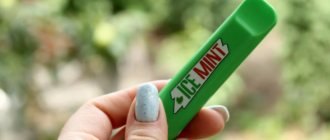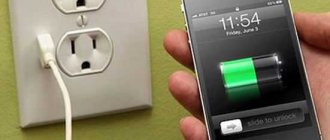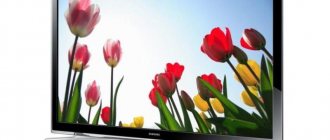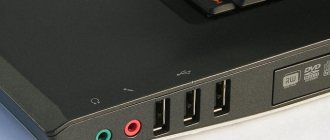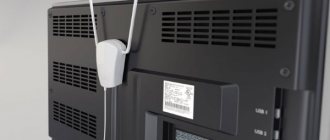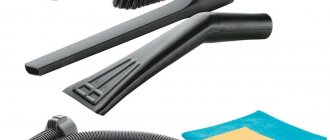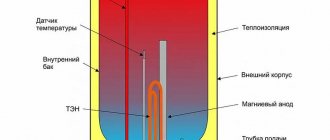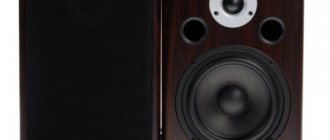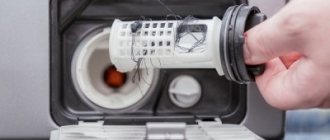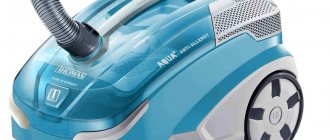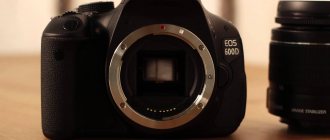What is a plotter and what is it used for?
Before you begin to review the equipment, you need to understand its purpose. Basically, a plotter refers to a printing device. Essentially, it is an analogue of a printer, but more advanced. The plotter device allows you to perform large-format printing, create drawings, 3D postcards, advertising signs and other products. If the printer prints only on paper, then the media can be cardboard, fabric, film and other synthetic materials. There are special models, the device of which allows you to apply an image to T-shirts, other light clothing and even round objects, such as cups.
A plotter is similar to a printer, but has advanced functions.
Initially, the equipment was intended only for printing. Over time, his device was improved. Now this concept refers to machines that can not only print, but also cut out shapes from the media.
Cutting on a plotter
The main characteristics of cutter operation depend on the following criteria.
- Blade sharpness. Important when performing small jobs that require high clarity.
- Quality of the original drawing. Determines how accurately and correctly the image itself is built.
- The adhesive properties of the substrate, which should well fix sheets of leather, felt, vinyl and other working materials.
- Correct setup of the device for a specific consumable material.
Important! The cutting plotter cannot automatically adjust to the media type, so you must set the operating parameters yourself. If the slice has shifted along the printed one, you also need to double-check the software settings or reinstall it.
Before starting work on new equipment, it should be tested. This will avoid damage to the stickers due to incorrectly specified material.
If the device is designed not only for printing patterns, but also for cutting them, in the system settings you will need to specify the pressure on the knife and the blade extension. For thick materials such as cardboard, the lifting height of the working tool is important.
Advice! For each type of material it is necessary to have its own blade, which can be marked accordingly by the manufacturer (K - cardboard, B - paper). Knives for plywood, fabric, vinyl or leather will vary greatly.
Film and paper are the materials that are the most common consumables for cutters in the manufacture of signs and other products. Plotter cutting of each of them has certain features.
What to consider when working with Oracle
Self-adhesive film requires high precision when cutting. Processing an oracal involves several stages.
- Cleaning the surface.
- Image slicing.
- A sample of film.
- Surface mounting.
Particular attention should be paid to the material at the time of fixation. The larger the sheet format, the easier the film is deformed. An example of cutting an oracal by marks can be seen in the video below.
Nuances of handling paper
Compared to thermal transfer film, paper is an unpretentious material. For efficient operation, the operator only needs to ensure the sharpness of the cutter. Before starting the process, you need to check the pressure of the knife. When it is too small, the image will not separate from the base or will be barely visible. If, on the contrary, it is large, then the sheet may be deformed. You can check how the device works and evaluate the quality of the resulting image by running the plotter in test mode.
History of the creation of the plotter
In various sources there is equipment called a plotter. These are the plotters that were originally named that way. The machines were intended for drawing diagrams, tables, maps and other graphic images on large format media.
Initially, plotters were designed for printing graphic images on large media formats
Plotters appeared with the beginning of the development of computerization. In 1959, the first Calcomp 565 model went on sale. The device moved paper along its axis with wheels. Drawing was carried out with a writing pen.
Calcomp 565 was replaced by an improved Computervision's Interact I plotter. The equipment was equipped with an auto-design system. The drawing element was replaced with a ballpoint pen. The advantage of the equipment was high image accuracy. Over time, the manufacturer modernized it. It became possible to apply colored designs using multi-colored feathers.
High-resolution tablet models appeared in 1970. The equipment was produced by manufacturers HP and Tektronix. The electronic devices were the size of a table.
A modern plotter is a multifunctional device
A modern plotter is a device used for bright, colorful, high-resolution printing. Many models have large RAM and hard drive. An additional cutting function has appeared. Drawing blocks have been improved, allowing the medium to use not only paper, but also other materials.
Tablet plotter
This device is capable of forming an image on most materials. A special table is used to secure the material. The tablet itself is installed above the table. Its printing device, called the head, moves over the canvas - the carrier of the future graphic design in two projections.
There is another type of device of this kind: in this case, the head of the device remains fixed, and the table itself with the material on which the drawing is applied moves under the tablet.
This format of the printing device has a serious limitation on the format of the carrier material used: its dimensions must correspond to the parameters of the table.
What is the working principle of a plotter
The work of the first plotters was to move the paper medium along the X coordinate. The movement of the drawing pen occurred along the Y coordinate. Equipment with a ballpoint pen was controlled by a computer. Modern plotters operate via a connection to a computer port, SCSI interface and Ethernet. Advanced devices have their own built-in buffer and control display. For control, there are special programs where the operator develops an image and sets parameters. When the project is ready, it is sent for printing. The device receives the signal and begins to perform the task exactly according to the program.
Sequence of actions when printing
Learning to work on a plotter (for example, from Corel) is quite simple. To do this, proceed according to the following scheme:
- Find the required file in the desired folder or on the desktop and open it.
- Click on “Print”.
- In the “Printer” line, select the model of the device to which you want to output the image.
- Click the “Properties” button. The window that opens allows you to set the necessary parameters: paper size, print scale and range, and others.
- Confirm the selected parameters by clicking the “Ok” button.
- An image preview will open, allowing the operator to see what the finished job will look like.
- By pressing the “Print” button, the picture is sent for printing.
Advice! In “Properties” you can select the number of copies and indicate from which page and on which the print should be made.
It is recommended to mark the drawing if it consists of several sheets. This is done in the corresponding menu item using markers with hints. To avoid errors, it is better to print sheets of standard formats that the plotter supports.
Main types of plotters and their characteristics
There are three types of equipment that differ in functionality: cutting, printing and combined plotters. The third option is of great interest. Such devices are often called hybrids. You may come across the name plotter-cutter. The advantage is that you can cut and print images on a plotter. There is no need to purchase two expensive devices.
Important! A hybrid plotter is indispensable in the production of stickers and other similar products where it is necessary to apply an image and cut it along a certain contour.
If we talk about the main varieties, then there are two groups of plotters: cutting and printing. Each device performs only one specific function.
Cutting plotters
From the name of the device one can already judge that it is intended only for cutting media. The plotter is equipped with a knife that, according to a trajectory specified by the program, cuts out a fragment, a complex pattern, and even text.
The cutting apparatus is equipped with a knife instead of a printing unit
Essentially, a cutting plotter is a cutting machine. Select a device according to its characteristics. First of all, the format is taken into account, which determines what size media can be used. Cutting speed affects productivity. The pressure of the knife and the type of cutter determines what material the carrier can be used from, for example, film, cardboard.
Attention! An important feature for a cutting plotter is the presence of an optical sensor. The positioning device ensures cutting accuracy. The knife does not extend beyond the marked boundaries of the cutting lines.
Printing plotters
Printing equipment can only apply an image to a medium. The design of the devices is different. Instead of a knife, the working unit is a drawing block. The method of applying the image depends on the printing technology.
Printing devices are only capable of printing an image onto a medium
To use the plotter for its intended purpose, you need to choose the right device taking into account its characteristics. Printing speed, as in the previous device, affects performance. Resolution is responsible for the clarity of the image at certain sizes. The format determines what size media can be used and what size the image will be. The color rendering parameter affects the brightness and saturation of the picture. Such plotters are needed in the production of advertising products. For drawing graphic images, color rendering quality is not particularly important.
Advice! A high-speed printing machine is needed to produce large quantities of products.
Types of plotters
Printers
Allows you to print images on different media. The main working unit is the drawing block. Depending on the plotter, the method of plotting the image may differ. When choosing a printing plotter, a number of characteristics are taken into account.
- Print speed. Affects performance. You need to pay attention to this parameter when products will be produced in large quantities.
- Permission. Determines the clarity of the printed image.
- Format. Affects the size of the media and the resulting image.
- Color rendition, which determines the brightness and saturation of the printed image. For advertising printing, good color rendition is important, but when applying graphics, color saturation does not matter.
Cutting plotters
The device is only used for cutting media.
The working element is a knife with an optical sensor that ensures cutting accuracy. A program is loaded into a plotter, or as it is also called, a cutter, according to which it will cut out fragments of media, complex patterns and even text in a given direction, without going beyond the boundaries of the cutting lines.
When choosing a cutter, the following characteristics are taken into account:
- format (the media size depends on it);
- cutting speed;
- the force with which the knife presses and the type of cutter determine the permissible carrier material (cardboard or film).
Hybrid (plotters-cutters)
The device is also called “two in one”. Can print and cut media. Most often this is a roll-type printing plotter with a cutting knife. It is convenient to cut film or paper immediately after printing.
Main parts:
- display;
- network index;
- cross knife;
- basket;
- roll mount.
When choosing, take into account the following parameters.
- Cutting width. The maximum is 1 m, which is enough for the production of most types of advertising materials. For everyday needs, a width of 0.5-0.72 m is sufficient.
- Cutting accuracy. The thinner the carrier, the higher the accuracy of the blade must be, but the price will also be higher.
- Optical parameters. Priority is given to devices with a sensor for creating marks on printed media. Any shape is cut exactly to size along the marked contours. The operation of the sensor is based on reference to the dimensions of the original layout.
- Knife pressure. The stronger, the denser the material the plotter can cut. Pressure for plain paper – 350 g. For vinyl – 400-500 g.
- Cutting speed. High speed cutting is selected for urgent work. If the plotter-cutter operates at a measured pace, there is no need to buy an expensive model with a high speed value.
Types of plotters according to the method of sheet placement
The carrier for the equipment is paper, cardboard, film, synthetic fabric and other materials. They come in the form of sheets or rolls. Each type of plotter is designed to feed a specific media, which determines its design.
Flatbed plotters
The design of tablet-type equipment is similar in functionality to a printer. The technique only works with sheet media. It is fixedly fixed on the table using magnetic, electrical or mechanical fixation.
The design of flatbed models includes a large table for sheets of media
Tablet devices are usually used to print images in A2 and A3 formats. The disadvantage is the large size due to the presence of the table. Because of this, tablet-type devices are not very popular. This technique is in demand when printing advertising signs of huge sizes.
Roll plotter
A special feature of roll equipment is its compactness. The media is wound into a roll of a certain thickness. The feed occurs along the drum, where, during the movement, the drawing block applies the image.
The design of roll models allows the use of long media wound on a roll with compact equipment sizes
The device requires little space. Roll models save consumables and have better print quality. The devices also win in terms of functionality. Their device allows you to perform a greater number of tasks.
What types of plotters are there by type of drawing block?
A special feature of printing machines is the presence of a drawing block. The printing technology depends on its device. Each drawing block is capable of working with a specific type of media.
Pen plotters
The writing head of the equipment has a device in the form of pens. This is where the name came from. During operation, the pen moves in two directions. The devices are considered to be of the vector type and come in two types: some draw with liquid paints, others apply the image with slate pens.
Pen models are vector-type devices
The head is driven by a motor, which creates a certain level of noise. The advantage of a pen device is high print quality, contrast and good color rendering. Disadvantage: low printing speed.
Inkjet plotters
In terms of printing technology, the devices resemble ordinary household inkjet printers. The picture is applied with liquid paints sprayed from the nozzle of the writing head. Most models work with 4 base colors. Other shades are obtained by mixing paints.
Most inkjet plotters work with 4 basic ink colors
The jet head is equipped with a large number of nozzles. During printing, they heat up, due to which an air-filled bubble is formed, which, under pressure, squeezes the ink onto the media. The advantage is simple operation of the plotter, high productivity, clear pictures, and affordable prices for consumables.
Electrostatic plotters
This category includes devices that apply an invisible image with charged particles onto a special medium. Liquid ink sticks to them and is finally fixed by drying.
Equipment with electrostatic printing technology is sensitive to room temperature and humidity
The advantage of plotters is the high speed of drawing. However, electrostatic devices can operate properly if the room is maintained at the manufacturer's recommended humidity level and air temperature.
Important! Electrostatic models are expensive and difficult to maintain.
Laser and LED plotters
The design of equipment in this category resembles laser printers. First, the head applies an invisible image to the media using a beam. Dry powdered paint - toner - sticks to the charged particles. Once heated and passed through the media drum, the ink is baked into a permanent image.
The writing head of the laser device has a long service life, since the possibility of paint drying on it is eliminated
The advantage of laser and LED devices is high performance. Due to the high resolution, clear images are obtained. The downside is the high cost of the equipment.
Direct image plotters
Printing technology is based on the use of thermal paper. The media passes through a special head - a comb. It is equipped with many heaters. Depending on the heating temperature, a certain color of each point of the pattern appears on the media.
Models with direct image output technology print on thermal paper
The peculiarity is that the mechanism of operation of plotters for direct image output during monochrome printing allows you to obtain a high-quality image with good clarity. The equipment is more in demand by engineering organizations for drawing up projects.
Thermal feed plotters
The printing technology and writing head design are similar to those of models with direct image output. The carrier is thermal paper, but between it and the comb there is a special film called a color donor.
Thermal feed machines print beautiful color images
During printing, the head passes over the media the required number of times. Warming up at a certain temperature, the donor leaves the desired color on thermal paper. Printed products do not fade from UV rays and are resistant to moisture.
What is a plotter
These devices were invented to print and cut adhesive large-format products. But thermal transfer film helped plotters become truly popular. When consumables became affordable and reliable in quality, the popularity of plotters increased dramatically. Looking at any inscription or image printed on textiles, you can be sure that it was made using a plotter. However, like almost any inscription on the film.
Cutting (cardboard or paper) is also carried out using a plotter. According to the most common classification, such plotters are usually divided into the following options.
- Flat. The material is placed on a large horizontal surface that is completely flat. The image is cut out using a movable carriage with a knife fixed in it.
- Rolled. The material is fed by unwinding the roll, and cutting according to marks occurs by moving the carriage in only one position (right and left). This type of device cannot boast of high image accuracy.
- Laser. At first glance, it may quite closely resemble an ordinary flat plotter. The difference is that instead of a knife, the cutting is done by a laser head.
Read more: what is a plotter.
How to use a plotter
To work, you will need special software. It comes with the device. If the basic program is not satisfactory, you can use third-party software. To print on a plotter, you need to do the following:
- create a pre-prepared file in the program or find it on the computer;
- click the “Print” command in the menu;
- in the equipment line, find the plotter connected to the computer, click the “Properties” command;
- set the parameters in the menu that appears, click the “Ok” command;
- First, a preview of the picture will appear, and if everything is satisfactory, give the “Print” command.
The nuances of operation may vary depending on the installed operating system and the programs used.
You can use a plotter for cutting in a similar way, but there are a lot of nuances. First, the device is tested on unnecessary media, so as not to spoil the material, for example, with color pictures for cutting.
The cutting device must be tested before use.
After submitting the “Properties” command, in the settings you set the pressure on the knife and the length of its extension, which depends on the media used. Next comes the image preview and the “Print” command.
All cutting type plotters cannot automatically adjust to the media type. The operator must do everything himself. It is important to check the sharpness of the knife, the accuracy of the constructed image, and place a substrate with good adhesive properties under the media so that the material does not move during cutting.
The video contains interesting information about the plotter:
Software for work
The plotter operates according to a predetermined algorithm. To get started, you need to connect to a personal computer. The image to be printed is sent to the device, after which the cutting process occurs. The speed of operation greatly depends on the technology that a particular model uses. Subsequently, the resulting material is applied to a metal or textile surface, depending on the need.
The plotter contains software that carries out the process. Of course, the appropriate program must also be installed on the personal computer, without which it is impossible to send the drawing for cutting. The easiest way to do this is from Corel - CorelDraw, software for plotter printing.
If contour cutting is carried out incorrectly, or the cut has shifted along the printed one, you need to adjust the software.
In addition to CorelDraw, you can use the PlotCalc program. It has a fairly simple interface, it’s easy to work with, and it doesn’t take much time to learn. Another well-known program for working with plotters is SignCut. The full version is paid, but you can download a trial test version from the official website, which has some limitations. In general, the program menu turned out to be somewhat overloaded, but the functionality is impressive. Using this utility, you can control the cutting depth of the knife, provided that this option is supported by the model itself.
The eCut program is a little less known. The main advantage of this software is that it allows you to cut files directly from CorelDraw. Files are written directly to the plotter port, bypassing the involvement of drivers, therefore, errors and incompatibilities are minimized.
The following software for outputting information to a plotter is called OMEGA CUT. Omega is used mainly for working with project documentation and is popular among those who work with plotters in this field. The functionality is limited in scope; perhaps the programs can be described as average.
The operating principle of a plotter, in addition to printing, also involves cutting. Of course, not all software is written with this function in mind. To put it simply, not all plotter programs are suitable for a plotter-cutter and vice versa. For devices operating on the 2-in-1 principle, “native” software is most often supplied, developed and implemented by the equipment manufacturer itself. However, there is always the option of using third-party software if the capabilities of the pre-installed one no longer meet the requirements.
If you just need to cut out pictures, then there is no need to purchase a program, the license for which costs hundreds of thousands of rubles. It will suffice to limit ourselves to more affordable analogues. Also, if the work only involves printing, then you can limit yourself to the capabilities of the built-in software without investing a penny in purchasing software. Of course, if in the process of work you have to resort to the services of a vector graphics editor, as well as print complex patterns, then you should think about expanding the functionality of the plotter software.
Setting up and installing the plotter
Before you start, you need to configure the plotter, and if it is being used for the first time, installation is required. The manufacturer supplies its device with an installation disk. It usually contains instructions, drivers, and software. To install, you need to load the disc into the drive and follow the pop-up prompts. If for some reason the disk is not available, everything can be downloaded online from the manufacturer’s website. After installing the software, click the “Devices” button in the Start menu. The operating system must detect the device. In the “Printers and Faxes” line, double-click with the left button of the computer mouse. In the window that appears, set the required settings.
One of the popular programs for work is Corel Draw.
The settings you have made can be saved and used in the future. They are changed if necessary. After settings, the equipment is put into operation provided there is a ready file for printing or cutting. If it doesn’t exist, create it in Corel Draw, Plot Calc, Sign Cut or another similar program.
Preparing the device for operation
The plotter is configured according to the following scheme.
- First, a disc with software is inserted into the PC drive. It usually comes with the equipment. If such a disk is missing, then files with drivers and installation instructions can be downloaded from the website of the company that released the custom model.
- Then turn on the plotter and install the program necessary for its operation on the computer.
- In the Start menu, find the “Devices” icon. When the system detects new equipment, then in the “Printers and Faxes” column, double-click on the plotter image with the left mouse button.
- Configure equipment operating parameters. These include: media type and feeding method, paper size, print area, and others.
Important! When setting up the pen model, it is necessary to specify the speed of movement of the working tools and their thickness. It is advisable to set them separately for each pen. If you plan to use the duplex printing feature, you should specify the location of the bindings.
